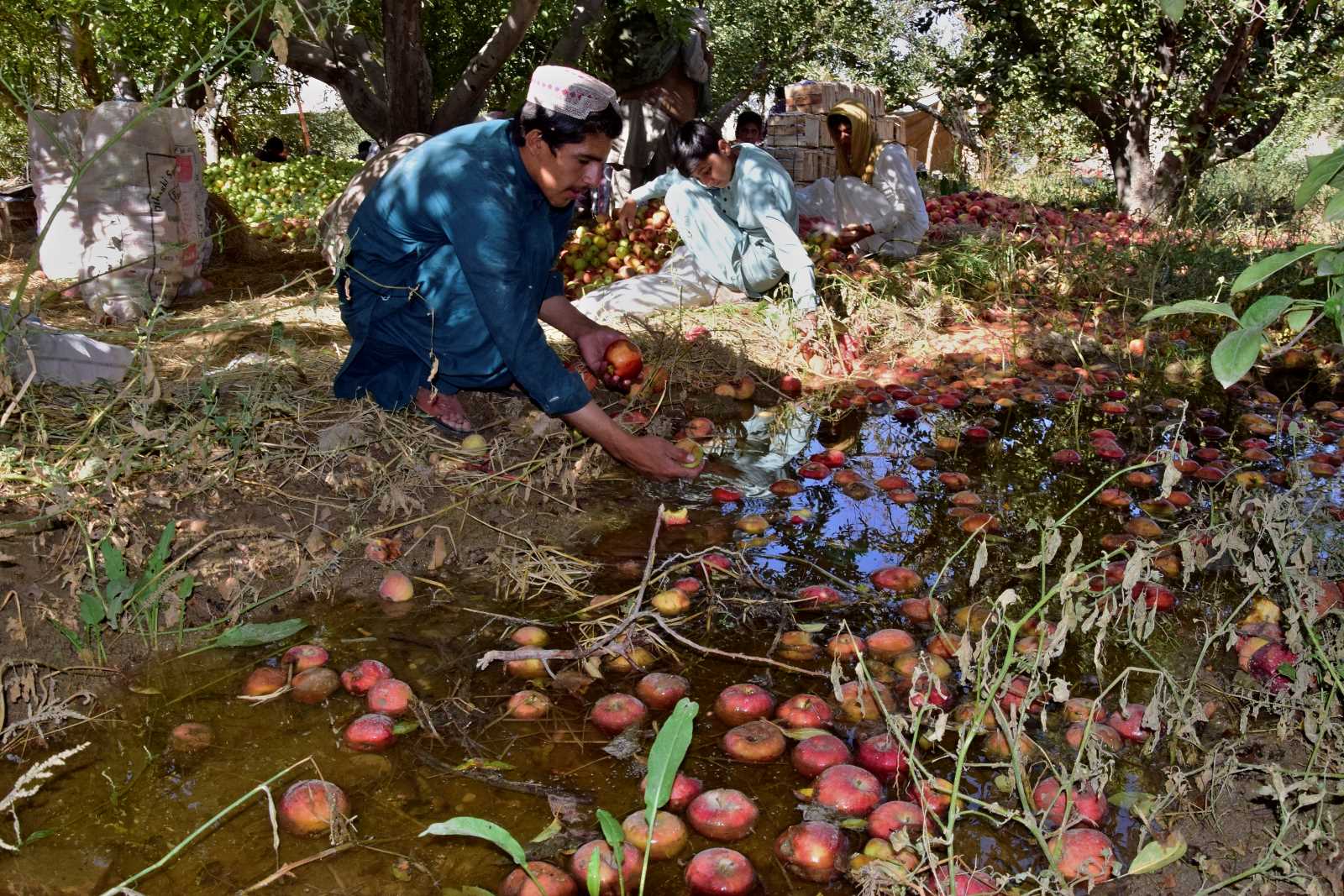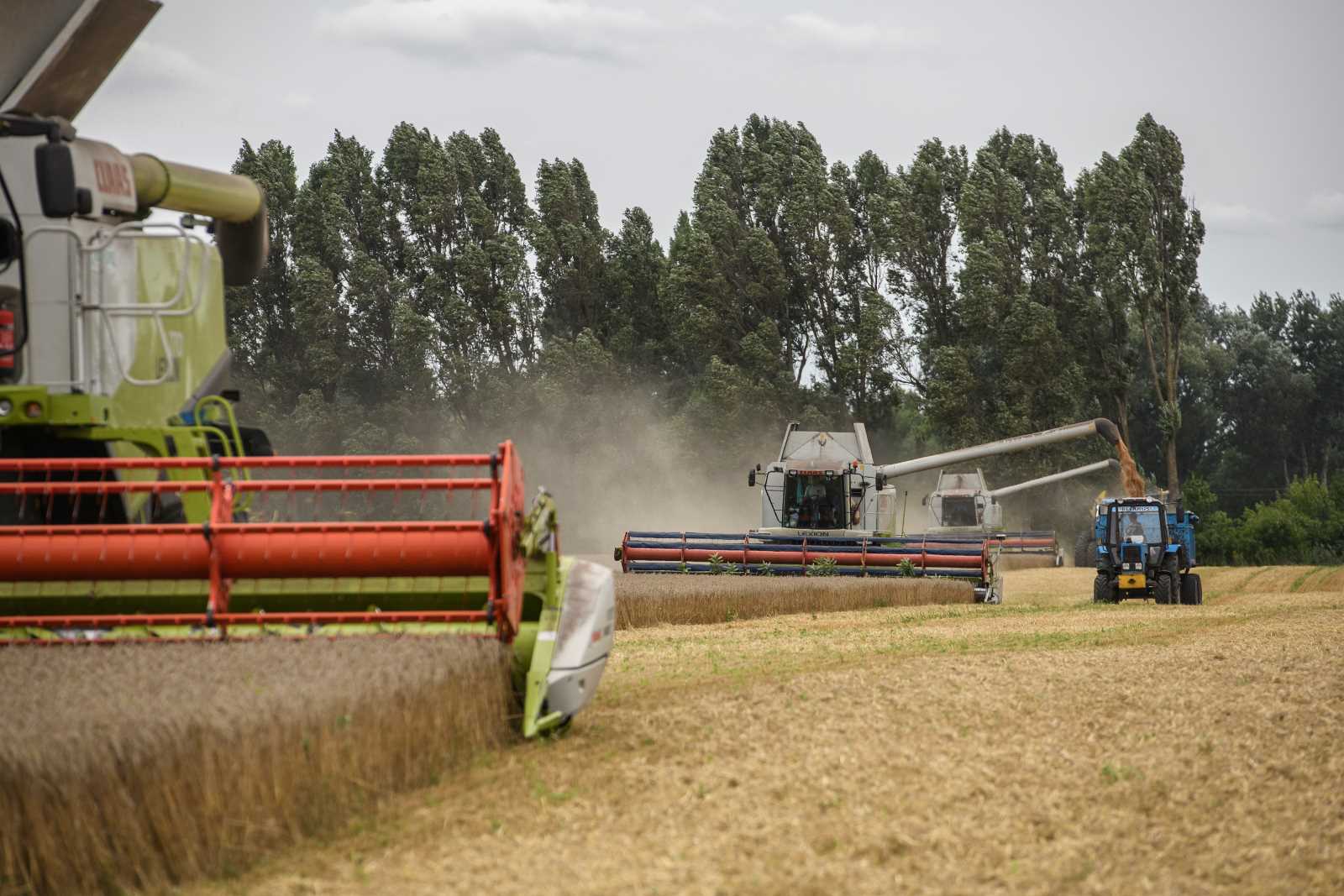Agrarian reform
Agriculture without emissions

According to the IAASTD (International Assessment of Agriculture Knowledge, Science and Technology for Development), the food sector, including all its upstream and downstream industries, generates up to 37 % of global greenhouse-gas emissions. A significant share of methane and nitrous oxide emissions, 44 % and 82 % respectively, results from agriculture.
It is very difficult to make reliable calculations in this sector. For the purpose of this essay, however, precise figures are not essential. What matters is the general outlook.
On the one hand, enormous quantities of carbon can potentially be sequestered by photosynthesis and by organic matter in the soil. This phenomenon is called “negative emissions”. On the other, such emissions can be released again at any time as “positive emissions” through harvesting, ploughing, deforestation, fertilisers and digestion.
Some farming practices maximise negative emissions in the long run. That is desirable and it also distinguishes industrial from climate-friendly cultivation.
Humus-rich soil and forests can endure for centuries. They are permanent CO2 sinks. Among others, this mechanism should be used to gain the time needed to reduce to zero the emissions of the entire world economy (see also Katja Dombrowski’s essay on the IPCC Special Report on Climate Change and Land in D+C/E+Z e-Paper 2019/09, Monitor).
The conversion of forests and natural areas into arable land currently causes most of agriculture’s greenhouse-gas emissions. In second place are methane emissions from cattle farming and wet rice cultivation. In crop cultivation, the most important emissions result from the production and use of mineral nitrogen fertiliser.
Organic fertiliser matters too. When used to boost plant growth, excrements generate negative emissions, since they ensure the plants’ nutrient supply and enrich the soil with organic matter. If the fertiliser is used, however, it emits greenhouse gases through volatilisation, erosion and decomposition.
The following basic guidelines are important for limiting emissions caused by land-use changes:
- As many forests and other ecosystems as possible must continue to serve as carbon sinks and fulfil other vital functions. Accordingly, existing fields must not only be farmed in a more sustainable way. Their productivity must be maximised as well.
- Arable land is used to grow either food for people or animal fodder and raw materials for bioenergy. Ever more land is being used for that latter purposes. Since the global population is increasing, we must not allow human meat consumption to grow without limit. Otherwise, the climate will take more harm.
The demand for greater agricultural productivity does not mean that more and more inputs are needed. Indeed, inputs can and must be reduced. The following goals and principles should guide the sustainable reorientation of agriculture:
- It is possible and necessary to provide everyone with an adequate supply of healthy food.
- Negative emissions must be increased (humus, leguminous crops, agroforestry).
- Nutrient cycles must be closed and synergies used.
- Climate justice demands better growth opportunities for African agriculture – and that means the international community needs to allow fertiliser budgets for them and reduce mineral fertilisers in the other parts of the world.
- Appropriate technical, institutional and social innovations to sustainably improve efficiency in agriculture.
Crop cultivation and land use
Let’s start with nitrogen. It is, after water, the most important driver of plant growth, which is why ever more mineral fertiliser is being used. The problem is that both its production and application generate considerable emissions. The use of nitrogen fertiliser could be cut in half if:
- its application were targeted,
- good manure management were practised and
- leguminous crops, which capture nitrogen from the atmosphere, figured more prominently in crop rotation.
Leguminous crops are so-called “protein plants”, including peas, beans, soybeans, peanuts and clover, as well as many other varieties of shrub, tree and algae. They are an important part of the solution. These plants carry bacteria inside their root nodules (rhizobia), which allow them to fix atmospheric nitrogen. They cover their own nitrogen requirements, with positive consequences for successive cultures or mixed cultures. If this natural mechanism were employed more extensively, significant quantities of nitrogen could be generated. That means negative emissions. There are synergies in regard to soil quality and nutrition moreover. Protein plants are part of a healthy diet, and the inclusion of these cultivars in crop rotation reduces the incidence of plant diseases and pests. Proper soil management can improve natural soil fertility and stimulate humus formation. It is important to grow legumes and use vegetable biomass as mulch.
Depressingly, the use of mineral fertiliser is increasing around the world. Africa is the big exception. Per hectare, only a tiny fraction of the global average is applied in this continent. The main reasons are high prices and low accessibility. Most African countries import mineral fertiliser and hardly produce any themselves. For this reason, and because of high transportation costs, fertiliser is much more expensive in Africa than elsewhere. Generally speaking, African smallholders cannot afford mineral fertiliser – at least not beyond the tiny, state-subsidised amounts.
At this point in time, however, it is still difficult to imagine the increase in productivity that Africa urgently needs happening without further application of mineral fertiliser. African agriculture needs access to affordable mineral fertiliser if it is to boost its productivity. Application elsewhere must be reduced accordingly if the generation of additional greenhouse-gas emissions is to be avoided.
In other words, the use of mineral fertiliser must be rationed on a global level. The redistribution in Africa’s favour is essential – not least because its population is growing fast. Agricultural productivity must keep up. To strike the balance, the global north and many emerging markets must reduce their dependence on mineral fertiliser. Nitrogen pricing would serve that purposes by making fertiliser more expensive. Such a policy could help drive a shift to more leguminous crop cultivation, mulching and the application of organic fertiliser with animal excrements (including manure). Another relevant resource would be pretreated wastewater from municipal utilities. It contains nitrogen and phosphates. The point is that humanity needs approaches that cut across many sectors in order to close nutrient cycles and to use synergies.
More fruits and nuts
According to Pablo Tittonell, a professor of agro-ecology, people today are producing 40 % more grains than are actually needed to feed humanity in a safe and healthy way. It is certainly important to store grain reserves in case of emergencies, but 40 % of the total annual need is obviously too much. Therefore, the share of cereal cultivation could be scaled back in favour of other, more diverse crops.
Tittonell also says that humanity could get along with half of its current cattle population without suffering nutritional harm. Indeed, diets would actually become healthier. Make no mistake: this proposal does not apply to African smallholders who often depend on their few animals in order to operate. What is at stake is the industrial-scale feedlots in the EU, Latin America and elsewhere. They generate an excess of emissions and facilitate the overconsumption that harms the health of masses of consumers.
In order to feed people a healthier diet, Tittonell argues that more fruits and nuts would be more beneficial than expanding industrial beef production. A change in land use in this direction would also mean that the trees and shrubs that nuts and fruit grow on would capture carbon emissions. Essentially, this solution is very simple. A large share of the current grazing land for cattle must be planted with trees and shrubs. That would drastically reduce methane emissions and sequester CO2.
Such a transformation will take time. Above all, it will require prudent policymaking and effective awareness raising. Policy tools and incentives must be designed in such a way that this transformation will pave its own way. By contrast, prohibition and appeals to personal renunciation tend to backfire.
Wet rice cultivation is a very important area of food production. Because of its methane emissions, it is also relevant to the climate. One possibility of reducing emissions is more efficient cultivation that incorporates azolla (an aquatic fern and leguminous crop) and fish production in flooded rice fields. In addition, emissions can be reduced through rice or root intensification, with higher yields being achieved with fewer seeds. The methane output per kilogramme of rice can thereby be reduced. At the moment, scientists are working hard on researching varieties with lower methane outputs.
The soil as a carbon sink
Soil management is a core aspect of making agriculture climate-neutral. In addition to decreasing reliance on mineral fertiliser, slurry must no longer be applied without straw. Instead, it should be applied as manure. That would reduce emissions as well as run-off. The goal is to create fertile, humus-rich arable land that is rich in organic matter and the associated soil life. Such soil is also a carbon sink. An important policy instrument to achieve this goal is site-specific livestock farming. The acceptable number of animals must be linked to the size of the landholding, so the land can be fertilised without problem. Such policy interventions will make meat more expensive.
Organically saturated soil should also not be ploughed, because ploughing can release trapped carbon. Furthermore, soil should always be protected from wind and weather so that it does not dry out and is not eroded. Conservation agriculture (CA) fulfils all of these conditions. CA is already widespread in the US and Latin America, although it is carried out there in combination with the herbicide glyphosate. Weeds are the major challenge of the CA approach, since in no-till farming they can no longer be ploughed under. Nonetheless, the use of glyphosate is not necessary as practices in Africa show. The disadvantage of CA is that it is more labour- and knowledge-intensive than using the plough. This problem could be solved, however, with the help of technical innovations and education.
Closing nutrient cycles
Emission-free agriculture requires the use of treated municipal wastewater and other cross-sector approaches that impact non-agrarian practices. Using it to promote plant growth closes nutrient cycles.
Comprehensive approaches will often have societal dimensions. For example, in the Sahel region, herders could cooperate with crop farmers. Crop farmers could use animal manure and herders could graze their animals on crop residues. Such win-win constellations were once established by traditions, but those traditions have been abandoned. They should be reintroduced.
All of these climate-protection measures create positive synergies (for other locally adapted opportunities see article on climate-smart agriculture by Michaela Schaller in D+C/E+Z e-Paper 2017/11, Tribune).
Together with an effective policy framework and a willingness in society to embark on something new, this kind of transformation is feasible worldwide. Achieving it would mean climate neutrality or even additional negative emissions in the agricultural sector. At the same time, it would facilitate the production of adequate amounts of healthy food.
What is missing is the political will
Political will and public awareness are the most important drivers of climate-neutral agriculture. The preconditions for bringing about a shift in the private sector are effective incentives, well-designed taxes and the redistribution of subsidies, for instance from land subsidies for agriculture to payments for environmental services. The private sector has to be part of the transformation. It must innovate, and those innovations must be geared toward sustainability.
The global north, which is largely responsible for bringing about climate change so far, must pay for the lion’s share of agrarian reform. The more it creates opportunities for people living in rural areas of the global south, the more beneficial it will be. Life in the countryside would once again offer prospects for the future – and that effectively addresses the causes of migration.
Links
Info on IAASTD (International Assessment of Agriculture Knowledge, Science and Technology for Development):
https://www.globalagriculture.org/topics/climate-energy/
Pablo Tittonell’s TED talk “Feeding the world with agro-ecology”:
https://www.youtube.com/watch?v=wvxi4mN-Za0
Susanne Neubert is an agricultural economist and ecologist. She directs the Centre for Rural Development (SLE) at Humboldt University Berlin. On 1 November 2019, she joined the team of contributors preparing a flagship report on climate change and land on behalf of the German Advisory Council on Global Change (WBGU).
susanne.neubert@agrar.hu-berlin.de












